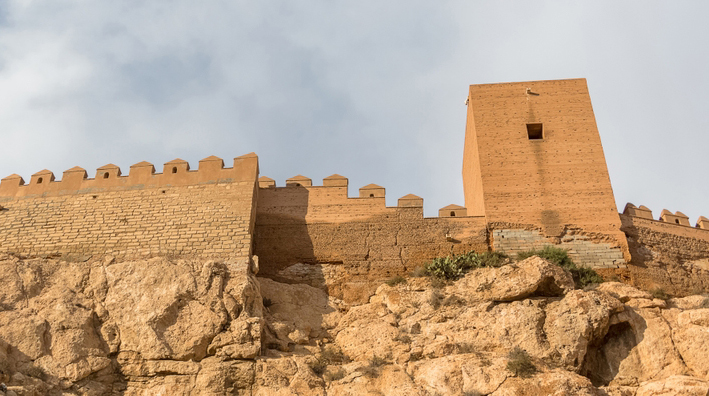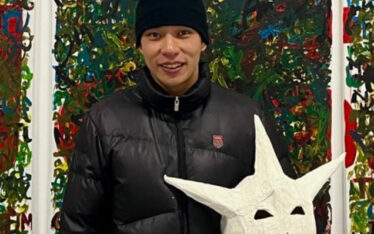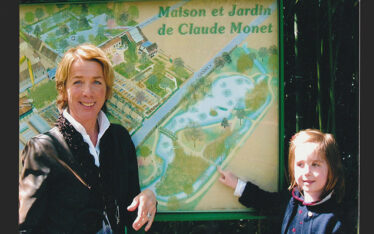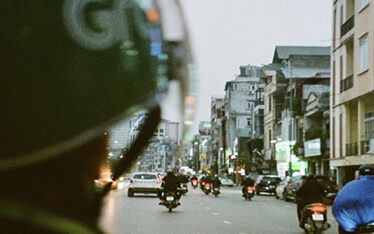
Alcazaba,Almeria (c)MiguelAlmeida/Shutterstock.com
Probing Spain – Pt. II
Up before daybreak, I have Martina’s cloth backpack and my travel gear already loaded in the trunk of the British-racing-green Mini I’ve rented.
We just hop into the car, rev its engine, shift into gear and start down the mountain from Ronda toward Málaga.
It’s perfect at this hour. No traffic. Only a patch of moderately thick fog.
____________________________
The Mini rips eastward, gliding across the Costa del Sol motorway, the old N-340, which follows the coastline toward Almería.
The film studios there were famous, late last century, for their Italian/Spanish take on the classic American western. Legendary Sergio Leone and other internationally acclaimed directors adopted an approach that redefined the power of silence in a lingering closeup or fully occupied wide shot. For a limited time, they actually succeeded in revitalizing what had been a dying genre.
Slow motion, long strides. Slow talking, long stares. Akimbo stances, suede dusters. Sweat stained hats. Wrinkled brows. Jingling spurs. Insane mirages. Buzzards perched on cacti, a stub of a cigarette butt charring one’s lips. Haunting elongated sounds. Synthesizer souls. A noose around one’s neck. A well-aimed gunshot shredding the rope. And saving the day.
____________________________
Martina methodically fidgets with the antique amber necklace she has on. As she does, she explains the historical significance of the road from Málaga to Almería in context to the 1930s and the excessive violence of the Spanish Civil War.
Heavy fighting had ravaged the south of Spain. Massacre after massacre. In Ronda, the republicans went after hundreds of suspected fascists to mercilessly toss many of these doomed victims deep into the ravine. The choreographed torture of a bullfight appears negligible by comparison.
In Málaga and Almería the tide soon changed. Desbandá, a scattering of people, occurs when nationalists ruthlessly slaughter republicans by the hundreds. Approximately 10,000 flee, many of them unsuccessful in their attempts to escape fascist atrocities. Several of Leone’s films were set even earlier against the brutalities of our own lethal Civil War in the States.
____________________________
Our current drive down the mountain is punctuated by the beat of Flamenco rock, a fusion beat from a local Andalusia station. The sound keeps us focused on the road while Martina educates me as to the political history of the region dating back a hundred years or so.
As we converse, the sky lightens from pitch black to an electric blue. These rays illuminate the clouds and pierce the darkness.
With visibility extremely limited at best, we cautiously wind our way down toward the sea. We navigate a network of sharp curves as the Mini heads due east to meet the rising sun.
____________________________
A clump of sans serif characters, suspended above us, swirl freely in the breeze. Martina tries unsuccessfully to decipher the words even in her native Spanish. Her fingers again reach reflexively for the amber pendant that hangs from her necklace. Conscious that my eyes are following her fingers, she volunteers: “It was my grandmother’s. My father’s mother’s. I always wear it for good luck.”
Meanwhile, an advertisement for a cantina ten kilometers ahead eases into view. In a delayed reaction, we exit the highway to fuel up the Mini in Almería.
Soon back on our way, we draw closer to the surreal stone walls and gates of the Alcazaba as this imposing, Moorish fortress floats across the horizon.
____________________________
A billboard displaying the image of a local cantina appears by the side of the road.
Even though the actual establishment seems a touch worse for wear, the interior exudes a warm, homey atmosphere. Intuitively, our nostrils catch a whiff of a variety of spices as they float by.
As my imagination examines the facial expressions on a handful of local patrons, I construct my own identity for each.
__________________________
“It’s all… what’s the word in English?” ponders Martina, thoughtfully.
“You mean relative,” I ask.
“…Relative. Yes, everything is relative. These people all grow younger when seen through older eyes, and they similarly grow older when seen through younger ones.”
__________________________
“We don’t see things as they are,” I recalled that Anaïs Nin, the noted 20th-century writer, had explained: “We see them as we are.”
At that moment, Carlos, an old jogging buddy’s face appears totally in flux. Trapped in multiple contexts… Wrinkles come and go. Gray hair appears and recedes. Worked out muscles bulge then arbitrarily sag. Stress infiltrates then evaporates.
I recently came across a photo of me with Carlos, taken when we both were so much younger. He appeared the much older one at the time. Whereas today, in that very same photo, he seems quite young and agile by comparison.
____________________________
Never having known Carlos, Martina relies on her fertile imagination to paint him in a slightly wilder hue.
It’s a variation of how Graciela, the conversant waitress across the floor, might view him.
Or how Rodrigo, who stands at the end of the bar in jeans and a work shirt, could create him in the sketch he is furiously drawing.
____________________________
“It’s all in the mind, you know.” The profound words of John Lennon echo in my ears.
“People say a woman’s vision is influenced by what she hears,” declares Martina. “A man, on the other hand, is first influenced by what he sees.”
But, often, I feel more taken by illusion than reality.
____________________________
Martina’s smile, however, is for real. Totally genuine. I pick up on her energy as we listen.
Together, having cultivated a reserve of mutual respect, we stroll toward the water’s edge, pondering our imminent drive to Mojácar.
I anticipate the prospect of letting go. I crave being productive and able to write. Mojácar will present an ideal opportunity as Martina, has friends living there and looks forward to catching up with them.
____________________________
Craving a change of scenery, Martina and I express our eagerness to drive on to Mojácar the next morning.
The lower half of this charming little village is filled with glistening whitewashed structures like most in the area that were built next to the sea.
Once finally on our way, a three-lane road leads into Mojácar Playa soon transforms itself. A flat paved bridge now spans the dry riverbed that also doubles these days as a sprawling, half-empty parking lot.
___________________________
A yellow, steam shovel sits idle amidst various other construction behemoths on edge of the road.
An assorted array of cars and trucks are randomly cover the surrounding area.
We’re forced to shade our eyes and squint to avoid the single blinding ray of sun that reflects off an expansive sea of chrome.
____________________________
We watch a dirty, off-white, sub-compact abruptly pull off the road onto the soft shoulder. As it does, it stirs up a storm. Several layers of reddish dust float everywhere, coating both traffic and the riverbed.
Just moments later, the sub-compact momentarily skids out of control. I have to hit the brakes on the Mini and burst through a cloud of the reddish particles that now fill the air.
We quickly react and roll up our windows as the cloud fans outward to erase the little visibility that remains.
____________________________
Martina first grabs my wrist then leans one shoulder affectionately into my chest. I respond by wrapping one arm around her. The other intensely grips the wheel.
My focus locked on the road ahead, I swerve the car into a swift U-turn. We want to head back inland and up to Mojácar Pueblo, the older, mountain half of the village.
The sun has abruptly begun to vanish beneath a blanket of grayish clouds that unexpectedly rushes in.
____________________________
The next morning, our mugs brimming with hot coffee, in hand, we wander over to a wooden deck nestled into the hillside above the ravine. The dry riverbed lay quietly beneath. There, on the deck, an anxious crowd is already growing. Everyone watching and waiting.
Three dozen eyes rotate hypnotically to the left then track their way up the mountain. Eighteen right forefingers are pointed toward the beginnings of the ravine from where a distant sound steadily intensifies. A faint hum builds rapidly into a thunderous roar.
Even though we still can’t see a thing, a herd of cameras click non-stop as if paparazzi have cornered a star. They haven’t. Not here, but the cameras shatter the silence. A six, no… eight, no… ten-foot wall of brown water menacingly appears out of nowhere, riding the horizon. Momentarily frozen in place, it then starts to descend in slow motion, giving off a roar as the barrier bursts open and the water breaks free through what’s left of the liquid wall. We watch as it sprays downward, soaking with lightning speed.
____________________________
The flash flood has instantly gained momentum! Cars, now in free fall on the edges of the ravine, are swiftly washed away. Tumbling. Spinning. Crashing.
Vehicles sweep past us, beneath the deck. The torrential downfall descends full speed, unchecked, racing downhill.
Within seconds, the riverbed rises higher than the surrounding embankments. The ravine, now anything but dry, fills with a relentless sea of mud.
____________________________
We again spot the massive, yellow steam shovel. No longer towering, the metal behemoth wobbles and sways uncontrollably a second or two before it topples. And it too is swept away.
“Shit!” curses Martina. The boards beneath us rattle and shake as the tide recklessly rises. “There’s no way this deck is going to hold. We gotta get out of here. Now!”
A faint thud resonates as Martina reaches up to her neck. Too late! Her amber necklace has landed on the planks. It takes her less than a second to lunge forward in a futile attempt to catch it. Her knees hit the wood as the necklace shatters. Pieces scatter onto the deck, most of them impossible to retrieve. The larger ones roll freely and drop into the cracks, falling between the planks into the raging water below.
About the Article
Driving the highway from Málaga to Mojácar gives time to reflect on past tragedies and current crises.
Probing Spain – Pt. I



